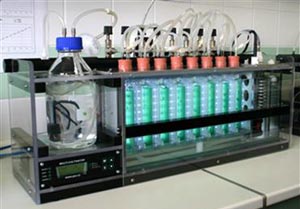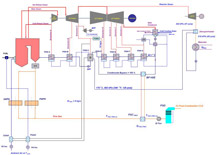Lehigh University
P.C. Rossin College of Engineering and Applied Science
Carbon Mitigation
Concerns over global warming have motivated accelerated pace of research and technology development for reducing CO2 emissions from coal-fired power plants. Post-combustion CO2 capture systems using either amine or ammonia CO2 scrubbers are the closest technologies to being ready for commercial deployment for with coal-fired power plants; however, the scale of the application makes these technologies very cost ineffective. The Energy Research Center (ERC) has engaged in research oriented to reduce the cost of CO2 mitigation with current technologies and on developing alternative concepts for CO2 capture.
One of the areas of carbon mitigation research at the ERC, funded by project from the US DOE, ICCI, NYSERDA and a consortium of utility companies, deals with thermal cycle analysis for unit heat rate improvements. Heat rate improvements result from turbine and generator upgrades, utilization of plant waste heat, instrumentation and control system upgrades, process optimization, and aggressive maintenance practices. Improvements in unit heat rate or efficiency are directly related to reduction of CO2 output per net MWhr of output power. These heat rate improvements can also contribute to offset the large power requirements and losses resulting from implementation of CO2 carbon systems on existing power plants. Depending on the specifics of a particular unit, heat rate reductions of more than 10% can be obtained, making it a practical and cost effective way for a utility company that wishes to reduce their coal-fired power plant carbon footprint.
Another area of CO2 mitigation research at the ERC has been founded by DOE through the Ben Franklin Partnership and it involves a study on the use of CO2 and waste water from a municipal water treatment plant to grow algae for conversion into biofuels. This research has been carried out in collaboration with researchers at the Department of Earth & Environmental Sciences at Lehigh University, the Odyssey Land Development Group and the Lehigh County Authority. The project has lead to good results on algae strain selection for this application, the development of a photo bio-reactor (PBR) and specialized research equipment for growing and harvesting algae in a CO2/waste water environment, and understanding the algae biology that will be useful in the design of engineered PRBs.
Related Links:

